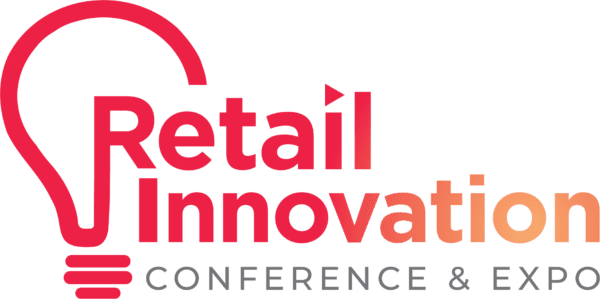Spoiler alert: Many brands are not reaching their full impact when it comes to working with influencers.
What was once considered a niche, experimental part of marketing has officially cemented itself as a critical tactic for success. Influencer marketing is predicted to reach over $71 billion by 2032, meaning its evolution has been and is expected to be exponential, considering it was just valued at $20 billion in 2024. As with anything new, there ought to be debate about how to do it right and how to measure it: How does one measure ‘influence’? How do you communicate the ROI from a collaboration with an influencer to leadership? How do you ensure you’re getting the most out of your partnerships?
In 2024, it was reported that businesses earn $5.78 for each dollar spent on influencers. As companies continue to invest in this space, it’s important for them to understand how to communicate the value of these campaigns, not only because it’s important to give credit where credit is due but also because it can provide valuable insights into impact that can be used to ensure your brand isn’t leaving anything on the table.
Is There a Gap in Authenticity?
Seeing big positive numbers in quarterly reports is commonly understood to mean your brand is doing well. While that may be sound logic for your profit margin, the same shouldn’t necessarily be applied to influencer marketing.
Consider this: your brand’s goal is to increase brand awareness of a new product. Your leaders have insisted on partnering with the biggest account on TikTok and having them read out a script. To them, this seems like the obvious choice. More followers mean more eyeballs, which equals more awareness. The thing leaders aren’t always seeing is how audiences are rejecting inauthentic brand partnerships.
If the product you’re trying to sell is B2B, tapping an influencer whose content mainly appeals to teenagers doesn’t make sense, regardless of their follower count. While 81% of consumers reported that social media posts from influencers, friends or family drove interest in an item, 63% of respondents also said they’ve noticed an increase in sponsored content. Skepticism is increasing, and building trust is more important than ever.
Making sure partnerships feel authentic is key to ensuring you’re not negatively affecting the long-term value. If you’ve selected an influencer for the way they speak casually to their audience, handing them a strict script jeopardizes that authenticity and the probability of the campaign seeing positive results.
ROI Measurement Blind Spots
Speaking of campaigns, most marketing teams spend a fair amount of time debating measurement and trying to find ‘real’ numbers that drive meaningful results for the business. The flashy nature of influencer marketing means it’s easy for brands to get caught up on the wrong metrics. When brands zero in on tracking follower counts, likes or putting all their efforts into “going viral,” they’re missing the ways that these partnerships drive real ROI.
Instead, brands should look at omnichannel conversions, which refers to the tracking of both online and offline customer behavior when impacted by a brand’s campaign that uses creators.
It’s also important to consider that with an evolving market, you also need to make sure your ways of measurement also are always evolving. Teams should be looking at their measurement frameworks with a critical eye and looking toward the different tools on the market to help them keep up with the changing landscape.
Misaligned Partnerships
Similar to the authenticity gap, misaligned partnerships can be detrimental to both parties’ credibility and marketing positioning. It shouldn’t be difficult to figure out who has the highest number of followers, or whose creative style matches yours in your specific niche. The question every influencer relations team should be asking is: is this person truly aligned with our brand and driving the conversation that we want to be associated with?
For example, say you’re a vegan beauty brand and you’ve found what appears to be the perfect influencer, with great reach and an engaged audience. They already make beauty content, and they seem interested in brand collaborations. However, after a deeper look into their content, you discover that this influencer spends 30% of their time talking about how their family owns a farm and that they’re very proud of the meat and animal byproducts their family sells.
There’s a misalignment there. Your audience may turn around and say, “Hey, wait a minute, you pride yourself on being a vegan company, why are you working with someone who isn’t also vegan?” and they’d be right to question it!
Where do we Go from Here?
Today, influencer marketing is not new. It’s the expectation, especially if you’re a B2C company, that you are exploring and utilizing the influence these people have amongst your audiences. What will set your company apart, and what will guarantee the fact that you’re not leaving anything on the table, is if your partnerships are strategic and measured properly.
It might seem obvious, but there are many examples of brands missing the mark, and audiences catch on right away.
Manuel Albuquerque is the CEO and Co-founder of Primetag, founded in October 2018. The platform helps brands understand how influencer campaigns impact all customer touch points, including in-store spending that traditional metrics miss. His journey began as a professional basketball player in Portugal at age 16, before moving into music. Through circles with professional athletes and musicians who gained sizable followings, he recognized the need to help early influencers monetize their social media presence, inspiring Primetag’s creation. His mission focuses on “connecting people, empowering talent and fulfilling dreams” for all influencer marketing stakeholders. Albuquerque believes influencer marketing is more than a trend, leading Primetag to create what he calls “The Return on Influence.”




